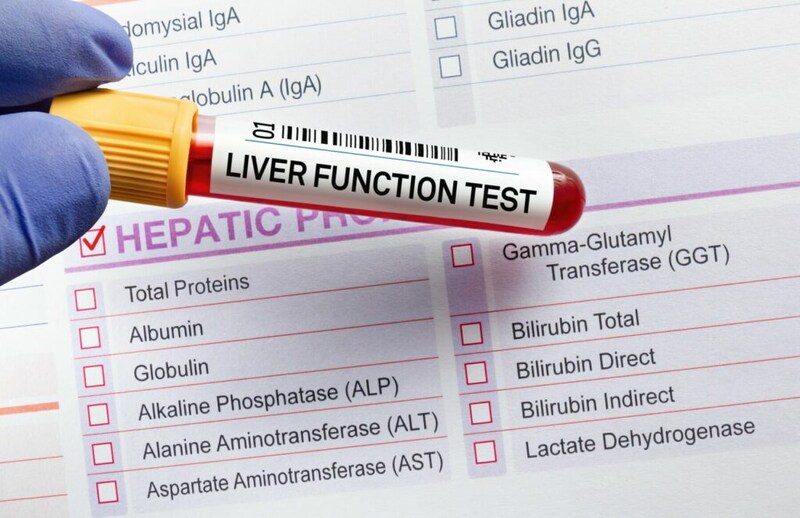Playing a pivotal role in an array of physiological processes, from metabolism to detoxification, that is the significance of the liver, a vital organ within our bodies. Recognizing symptoms associated with liver problems not only ensures early intervention but also sustains optimal health. Thus, it carries profound importance. This article probes into complex indicators of liver dysfunction and illuminates critical indicators for hepatic health, issues that demand attention rather than being overlooked.
Early Warning Signs of Liver Disease
Liver disease often begins with inconspicuous symptoms that demand attention for timely intervention.
- Jaundice: Elevated bilirubin levels manifest as the telltale yellowing of the skin and eyes, unequivocally signaling underlying liver dysfunction. Dismissing this visual cue is inadvisable. It potentially implies a necessity for medical assessment.
- Fatigue: Understanding persistent exhaustion, even with adequate rest, as a subtle yet significant indicator of compromised liver function extends beyond everyday tiredness. This early sign comprehension enables individuals to mitigate potential issues before they intensify.
- Abdominal Pain: The experience of discomfort or pain in the upper right side of the abdomen may not simply signal a passing ache; rather, it could serve as an indicator of underlying liver issues. This emphasizes our need to heed bodily cues and underscores how crucial such attention is.
Visible Clues to Liver Dysfunction
Certain visible signs, serving a crucial role in early diagnosis and treatment, offer external clues while internal symptoms remain pivotal.
- Swelling: Visible consequences of liver-related fluid retention may include edema or swelling in the abdomen or legs. Often underestimated, this manifestation can serve as a crucial pointer towards concerns about liver health.
- Spider Angiomas: Reddish, spider-like blood vessels on the skin's surface may signify more than a mere cosmetic issue. They could underscore underlying liver problems. This highlights the importance of discerning external manifestations.
- Bruising Easily: Easy bruising can result from impaired liver function impacting blood clotting. The visible consequence highlights the interconnectedness of internal health and external cues, urging individuals to pay attention to potential signs that extend beyond superficial skin indicators.
Hepatic Health Indicators - Decoding Diagnostic Tests
Medical professionals utilize a range of diagnostic tests to assess liver health accurately. Understanding these examinations empowers individuals and enables them to actively engage in their healthcare journey.
Liver Function Tests (LFTs):
Enzymes, bilirubin, and proteins in the blood undergo measurement through these tests. They provide a window into liver function. Mastering the nuances of Liver Function Tests, LFTs for short elevates your capacity to interpret results. It deepens comprehension of the complexities surrounding liver health.

Imaging Studies:
Detailed images, crucial for detecting liver abnormalities, are provided by techniques such as ultrasound, CT scans, and MRIs. Individuals who grasp the diagnostic processes contributing to a comprehensive understanding of their liver health must be familiar with these imaging studies.
Biopsy:
Microscopic examination of a small tissue sample in a liver biopsy provides a definitive diagnosis. This is the precision that individuals with knowledge about this diagnostic tool can appreciate. It offers an exact identification of specific liver conditions.
Common Causes of Liver Problems - Unveiling Underlying Factors
Understanding the common causes of liver problems is crucial for effective intervention and prevention.
- Viral Infections: Common culprits, such as Hepatitis viruses A, B, and C, lead to acute or chronic inflammation of the liver. To tailor treatment strategies effectively, we must recognize that identifying the viral origins of liver issues is crucial.
- Alcohol Abuse: Recognizing excessive alcohol consumption as a well-known contributor to alcoholic liver disease, a condition that induces inflammation and scarring, is paramount. This awareness spurs individuals to scrutinize their habits of imbibing, possibly leading them toward modification.
- Non-Alcoholic Fatty Liver Disease (NAFLD): Non-alcohol-related fat accumulation in the liver is a prevalent cause of liver problems. Pivotal to implementing preventive measures is understanding the multifaceted origins of NAFLD.
Preventive Measures for Liver Health - Proactive Lifestyle Choices
Proactive lifestyle changes significantly mitigate the risk of liver problems. This directly correlates with maintaining a healthy liver.
- Balanced Diet: A nutrient-rich diet adoption bolsters liver function, you should include fruits, vegetables, and whole grains while limiting processed foods.
This approach not only supports overall well-being but also enhances the body's metabolic processes. It is an integral component of maintaining a healthy lifestyle.
- Moderate Alcohol Consumption: A key preventive measure for reducing the risk of alcoholic liver disease is to limit alcohol intake. Sustained liver health, on the other hand, benefits from maintaining a moderate level of alcohol consumption.

- Regular Exercise: Weight management and the reduction of fatty liver disease risk crucially depend on physical activity. Taking a proactive step towards liver wellness involves incorporating regular exercise into daily routines.
Seeking Professional Guidance
The first step involves recognizing symptoms. However, equally crucial for optimal care is the knowledge of when to seek professional guidance.
If symptoms persist or deteriorate, a swift consultation with a healthcare professional guarantees an exhaustive evaluation. Timely intervention and personalized care necessitate proactive medical attention.
Those who carry a family history of liver disease must maintain vigilance and commit to regular check-ups. An understanding of their genetic predispositions amplifies the cruciality of frequent health assessments.
If symptoms persist despite lifestyle changes, it becomes imperative to promptly seek medical guidance. Such a timely intervention can halt the progression of liver issues and enhance overall well-being.
To maintain overall health, you must prioritize understanding the symptoms of liver problems. This requires recognition, from early warning signs to visible clues, and a comprehensive overview involving diagnostic tests as provided in this article.
Individuals can take proactive steps toward liver wellness by recognizing hepatic health indicators and implementing preventive measures. Preserving liver health and guaranteeing a fulfilling life necessitate the integral practices of regular medical check-ups. Furthermore, seeking professional guidance when necessary is paramount.







